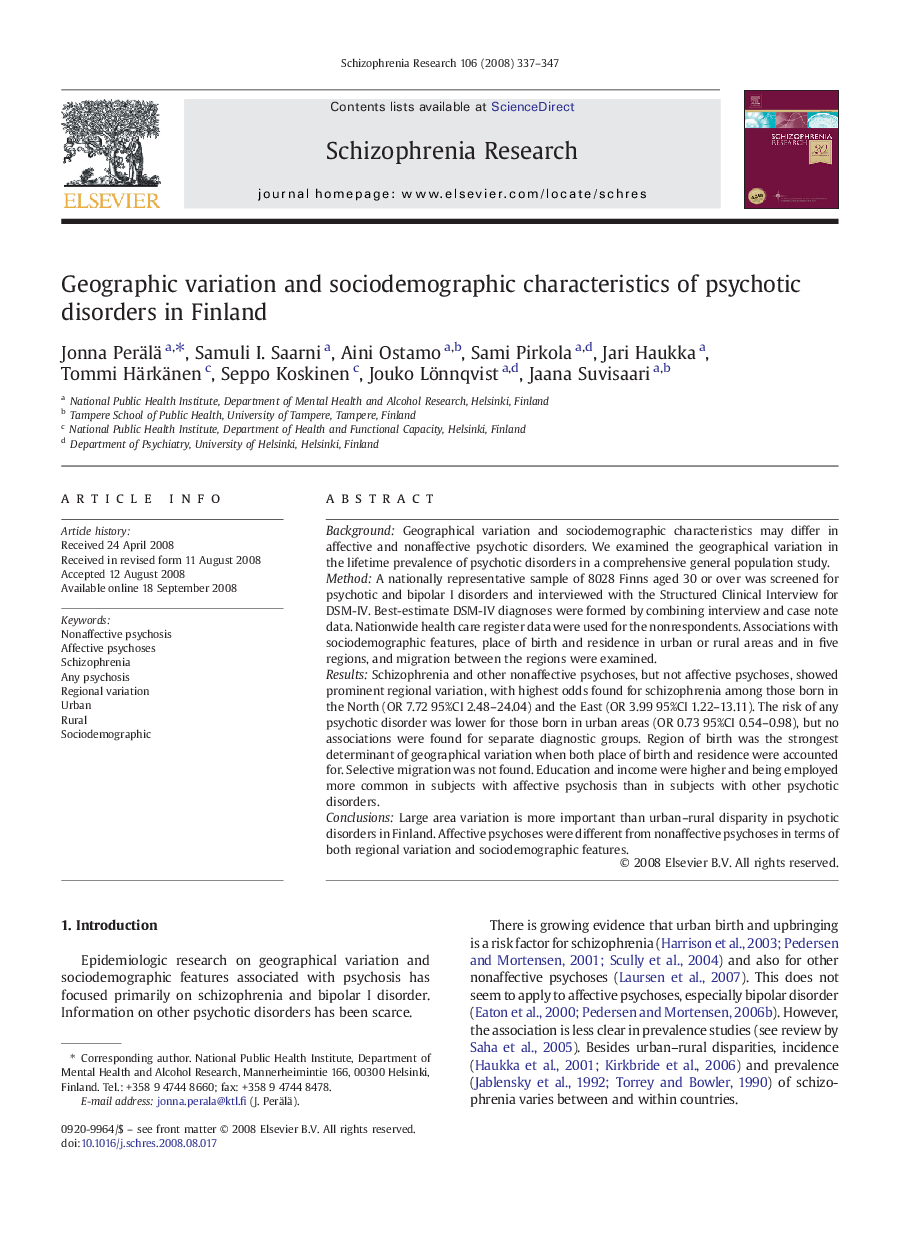| Article ID | Journal | Published Year | Pages | File Type |
|---|---|---|---|---|
| 341856 | Schizophrenia Research | 2008 | 11 Pages |
BackgroundGeographical variation and sociodemographic characteristics may differ in affective and nonaffective psychotic disorders. We examined the geographical variation in the lifetime prevalence of psychotic disorders in a comprehensive general population study.MethodA nationally representative sample of 8028 Finns aged 30 or over was screened for psychotic and bipolar I disorders and interviewed with the Structured Clinical Interview for DSM-IV. Best-estimate DSM-IV diagnoses were formed by combining interview and case note data. Nationwide health care register data were used for the nonrespondents. Associations with sociodemographic features, place of birth and residence in urban or rural areas and in five regions, and migration between the regions were examined.ResultsSchizophrenia and other nonaffective psychoses, but not affective psychoses, showed prominent regional variation, with highest odds found for schizophrenia among those born in the North (OR 7.72 95%CI 2.48–24.04) and the East (OR 3.99 95%CI 1.22–13.11). The risk of any psychotic disorder was lower for those born in urban areas (OR 0.73 95%CI 0.54–0.98), but no associations were found for separate diagnostic groups. Region of birth was the strongest determinant of geographical variation when both place of birth and residence were accounted for. Selective migration was not found. Education and income were higher and being employed more common in subjects with affective psychosis than in subjects with other psychotic disorders.ConclusionsLarge area variation is more important than urban–rural disparity in psychotic disorders in Finland. Affective psychoses were different from nonaffective psychoses in terms of both regional variation and sociodemographic features.
